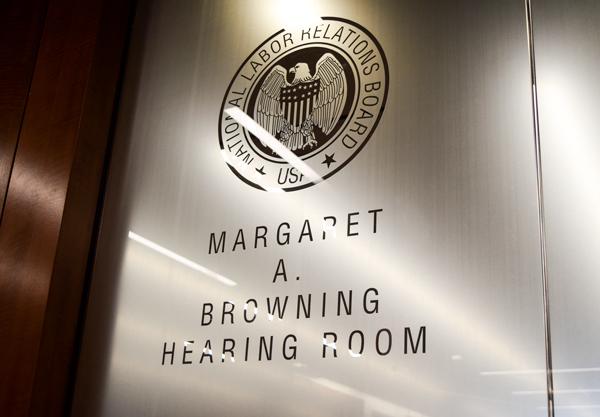Updated: Dec. 8, 2016 at 11:52 a.m.
Following a day-long hearing to determine whether or not resident advisers at GW can unionize, the National Labor Relations Board has yet to come to a decision.
Representatives speaking on behalf of both the University and resident advisers testified at a NLRB hearing Wednesday, but labor board officials say that it will be at least nine days before they will reach a formal decision on whether or not the student workers will be allowed to formally organize.
The University and RAs in favor of unionizing will submit briefs detailing their arguments to the NLRB by Dec. 16. While there is no set date for the decision, NLRB officials said they will inform each party of the outcome after they receive and read the briefs.
A local labor group, Service Employees International Union 500, filed a petition to unionize on behalf of the RAs on Nov. 28. The group already represents some part-time faculty at GW, and if the RAs are given the green light to formally organize, the union will advocate for the RAs’ salaries, legal matters and in contract negotiations.
If the petition is approved, GW resident advisers could become the first unionized student group in the country at a private university, pending an election on the matter by current RAs.
In August, the NLRB ruled in favor of graduate research and teaching assistants at Columbia University unionizing. The NLRB determined that case set a precedent, meaning that GW officials had the burden of proof in demonstrating that RAs are not employees with the right to unionize because they are students in an educational experience.
Austin Hansen, an RA in District House, said during the hearing that avenues for assistance and job expectations were made clear through RA training in August, in addition to weekly meetings with supervisors and other RAs.
“It doesn’t feel like a job. It’s a role and it has a responsibility,” Hansen said. “I am viewed as a peer, a peer with a title.”
Hansen added that the RA position is not a job so much as an educational experience, which he said has has a “tremendous impact on [his] life.”
While questions arose in the cross-examination from the union attorney about RAs needing permission from resident directors to take on internships, Hansen said it is more of a conversation than a limitation.
There are about 7,400 residents in 26 buildings between the Foggy Bottom and Mount Vernon campuses. There are about 100 RAs at GW, with one residence director for every eight to 10 RAs and area coordinators who oversee one or more buildings each.
Associate Dean of Students Tim Miller, the second witness called by GW’s representatives, said being an RA was a “transformative experience” and provided students with skills they would use later in life.
“There is an academic focus to this,” Miller said. “What an RA gets and what an RA gives is so beyond measure.”
Miller added that he would hope students apply to be RAs because they want to play active roles in their peers lives, not for the free housing and yearly stipend of $2,500.
Four more current and former RAs were called to the witness stand to describe their experiences at GW.
“My RA work was much more personal and passion-driven than my outside commitments,” Kelsey Johnston, an alumni and former RA in Potomac, Thurston and Guthridge halls, said.
Stacie Buell, an alumna and former RA in Thurston and FSK halls and a former Hatchet multimedia editor, said the informal guidelines allowed her to have casual, personalized conversations with residents and that being an RA is not so much a job as it is a “lifestyle.”
Rebecca Durango, a current RA in Somers Hall, and Calla Gilson, a former RA in Somers and Shenkman halls, said the lack of rigid guidelines for what RAs can and cannot do can lead to confusion about why RAs could lose their jobs. Current RA contracts state a specific amount of hours must be spent patrolling the halls, programming and meeting residents, but they do not account for how RAs should act in situations of overtime.
Cayla Harris contributed to reporting.







